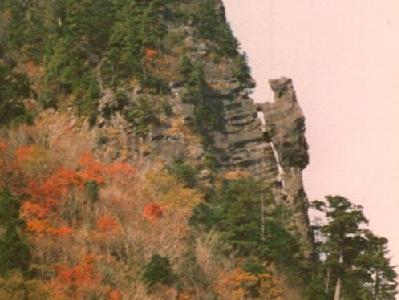Magaibutsu are Buddhist images carved on large rock outcrops, cliffs, or in caves. The ruins site of Fukurinji Temple is located in a quiet forest in back of Yasu Junior High School in Yasu City, Shiga Prefecture. Nothing pertaining to the temple has been discovered yet but the site is dotted with large and small rocks on which Buddhist images are carved. Together with many stone images of Buddha also placed everywhere in the site, they create a mysterious atmosphere.
On the large flat rock outcrop are 13 Jizo Bosatsu, each of which is about 45 cm tall. Two images of Amida Nyorai and one Kannon are carved on another large rock. Both of them are said to be carved in the early Muromachi period (1336-1573). Though they are small in size, the carved lines are delicate as if carved on woodblocks.
It is said that there used to be a lot more rocks with Buddhist images at this ruins site, but many of them were taken away by wealthy merchants in Osaka during the Meiji to Taisho periods (the late 19th to the early 20th centuries) to decorate their gardens.



































